What is Harumaki (Japanese Spring Rolls)?
Harumaki (春巻き) is the direct translation of “spring roll” in Japanese, with “haru” denoting spring and “maki” meaning roll. The term “maki” might sound familiar from “makizushi” (巻きずし), which refers to sushi rolls.
While harumaki shares similarities with the traditional Chinese spring roll, it’s been adapted to cater to Japanese palates. The essence of harumaki lies in its flexibility; virtually any ingredient can be used as a filling as long as it’s encased in the signature spring roll wrapper.
A distinctive feature of Japanese spring rolls is their accompaniment: they’re typically served with Japanese mustard (karashi) and soy sauce, diverging from the thicker sauces like sweet chili or plum sauce commonly paired with other Asian spring rolls.
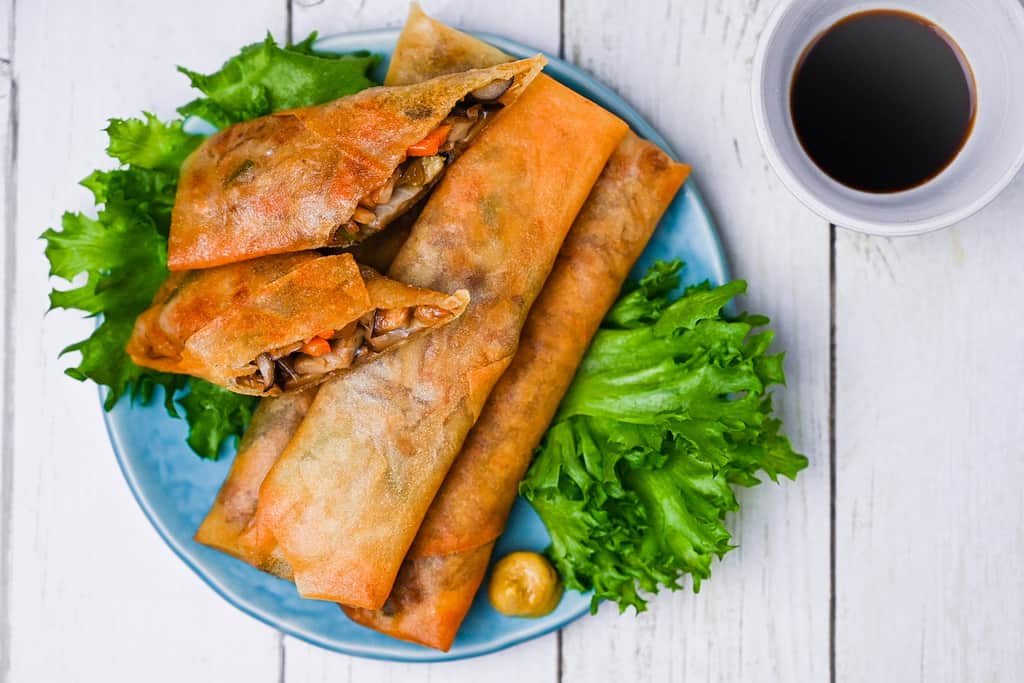
The beauty of harumaki lies in its versatility. Every household boasts a unique recipe, allowing for endless customization. Common ingredients used in Japanese harumaki include:
- Pork
- Shiitake mushrooms
- Bamboo shoots
- Carrots
- Cabbage
- Piman (small green peppers)
- Harusame, Japanese glass noodles akin to rice vermicelli
However, this list is by no means exhaustive, and the possibilities are endless.
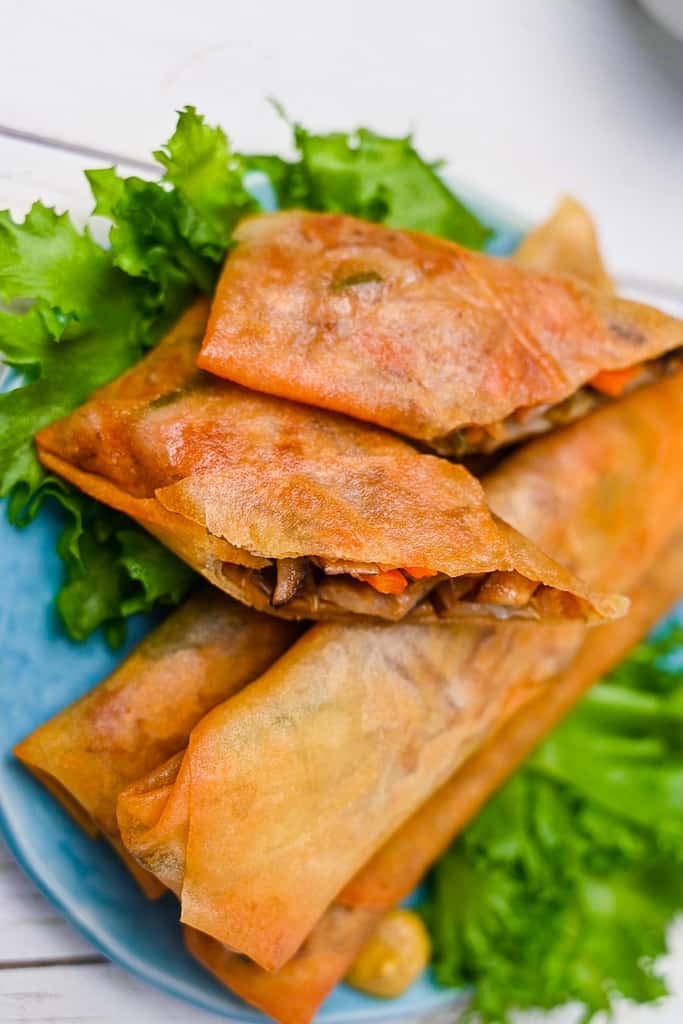
Visual Walkthrough & Tips
Here are my step-by-step instructions for how to make Japanese Harumaki at home. For ingredient quantities and simplified instructions, scroll down for the Printable Recipe Card below.
If you prefer to watch the process in action, check out my YouTube video of this recipe for a complete visual walkthrough!
1. How to make the filling
Take your pork belly or shoulder and roughly cut it. I do this so that my spring rolls have a chunkier texture, but if you’re using ground meat, you can skip this step.
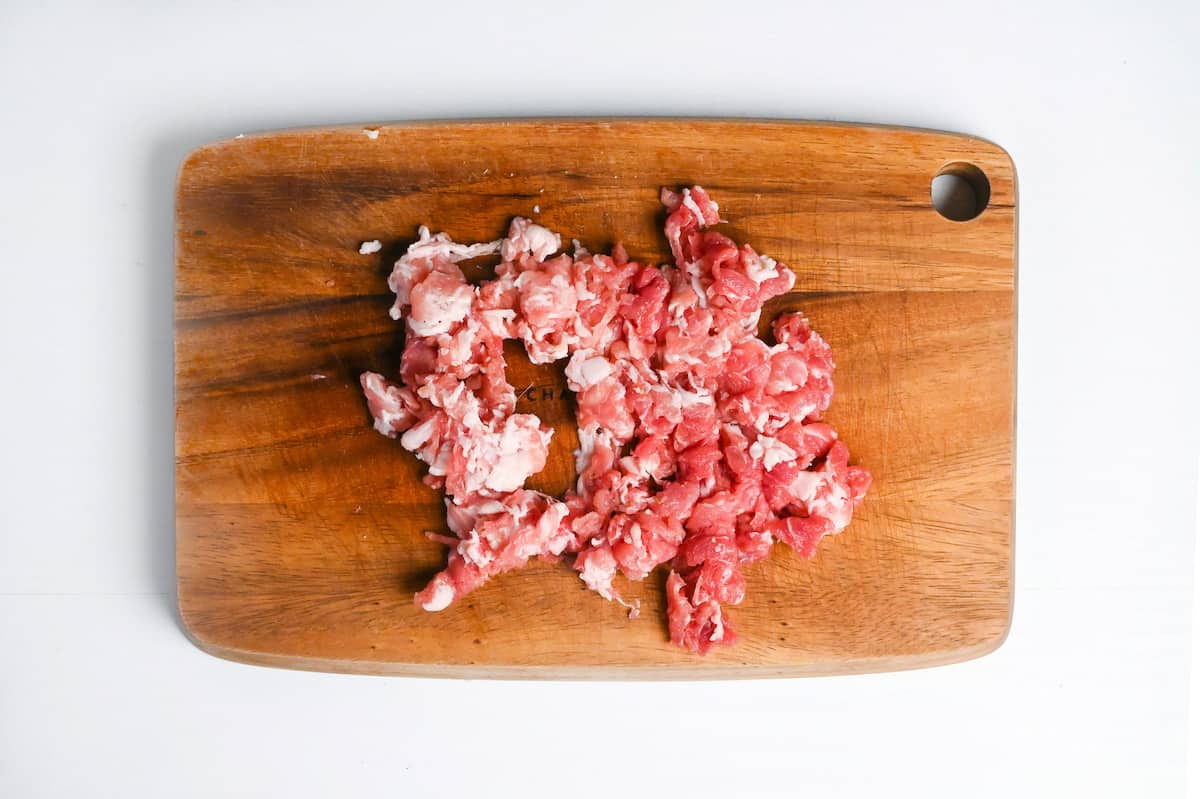
Place it in a mixing bowl with salt, pepper, and sesame oil and mix until evenly distributed.
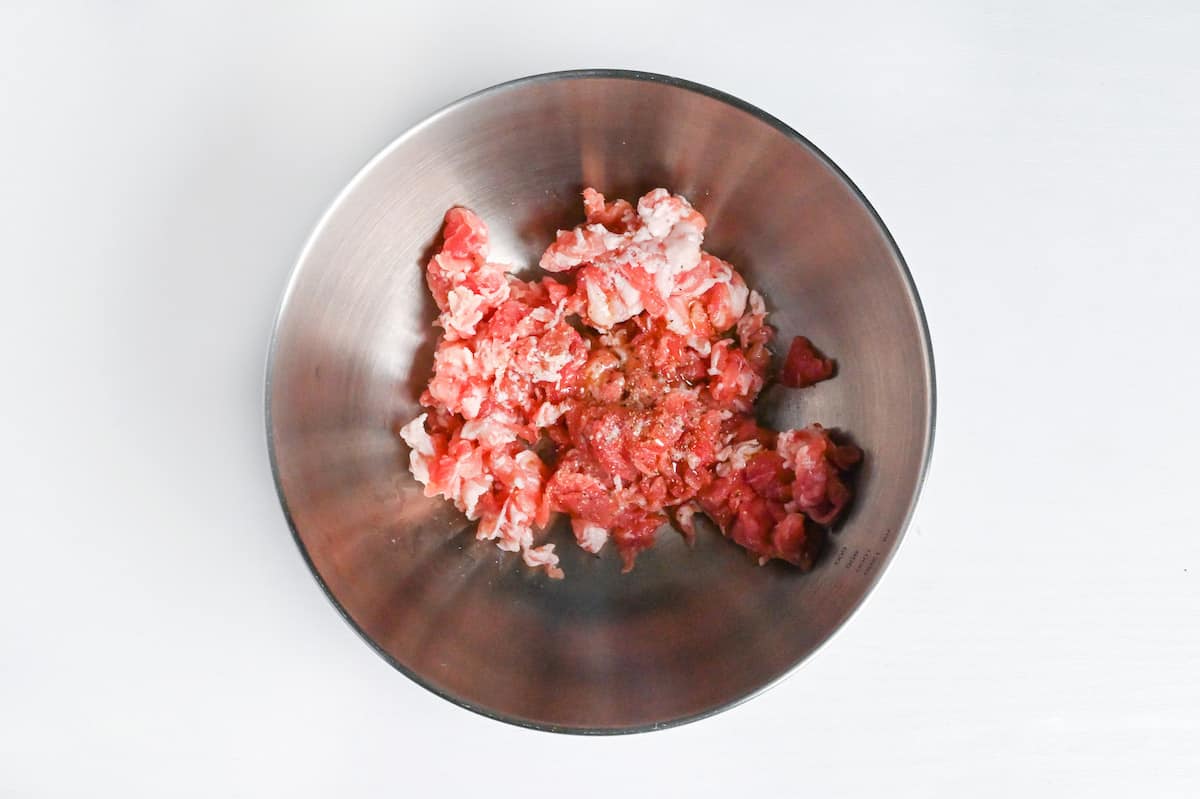
Heat up a pan (one that has a lid) on medium and add the shredded cabbage. Depending on your choice of pan, add a small amount of oil to prevent sticking.
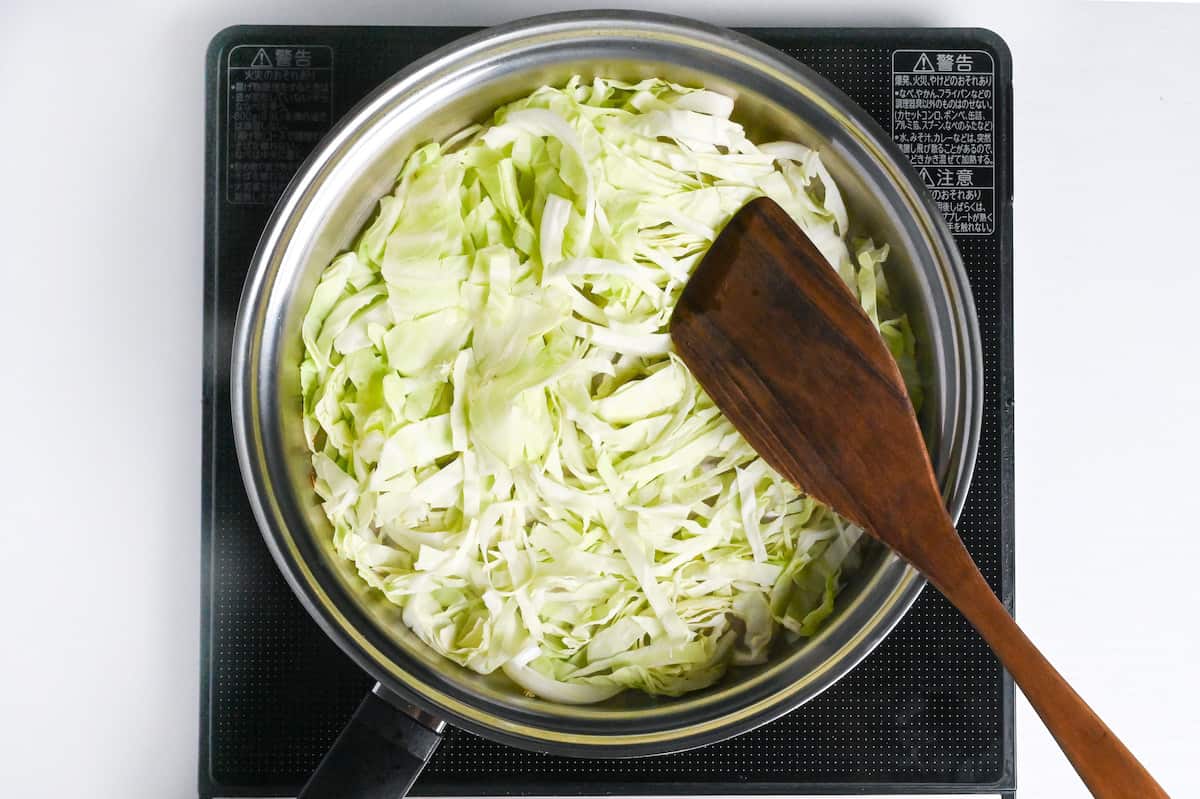
Once the cabbage has softened slightly, add chicken stock and sake and place the lid on top. Simmer for 3 minutes, and then turn off the heat.
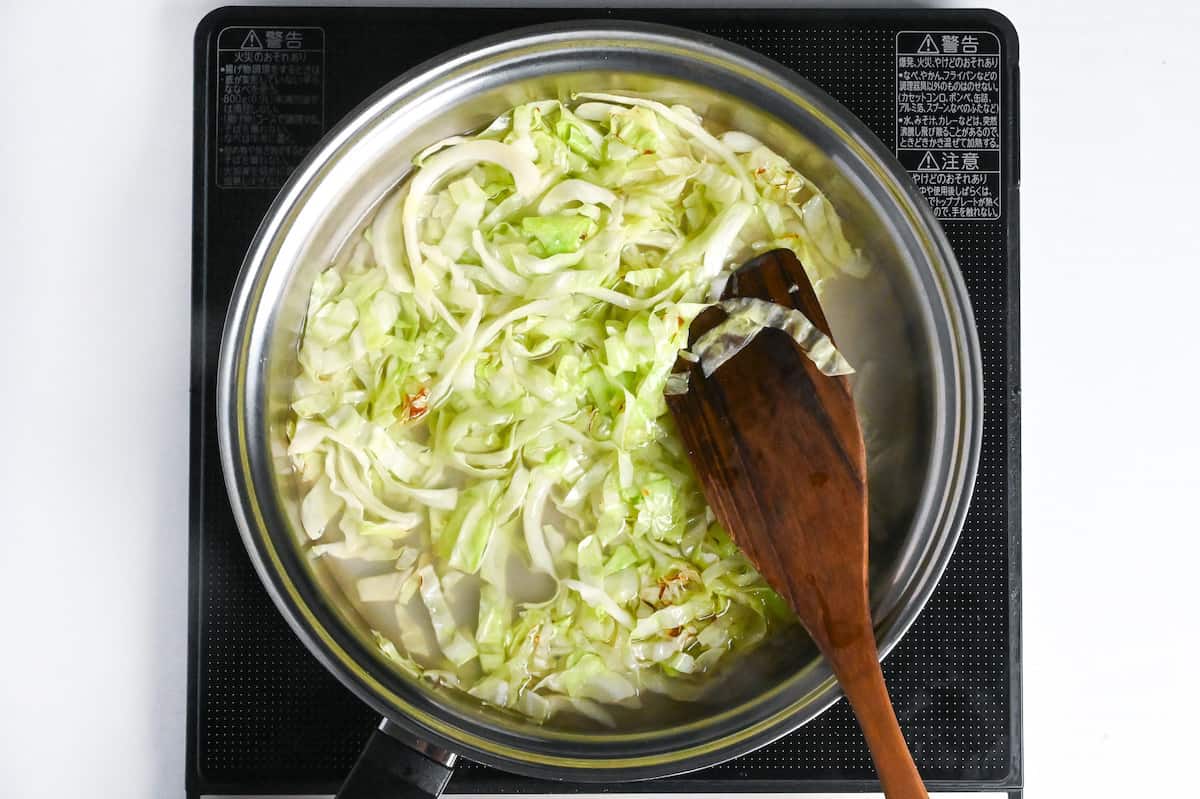
Heat a large pan on medium-low and add the pork. Stir fry until sealed.
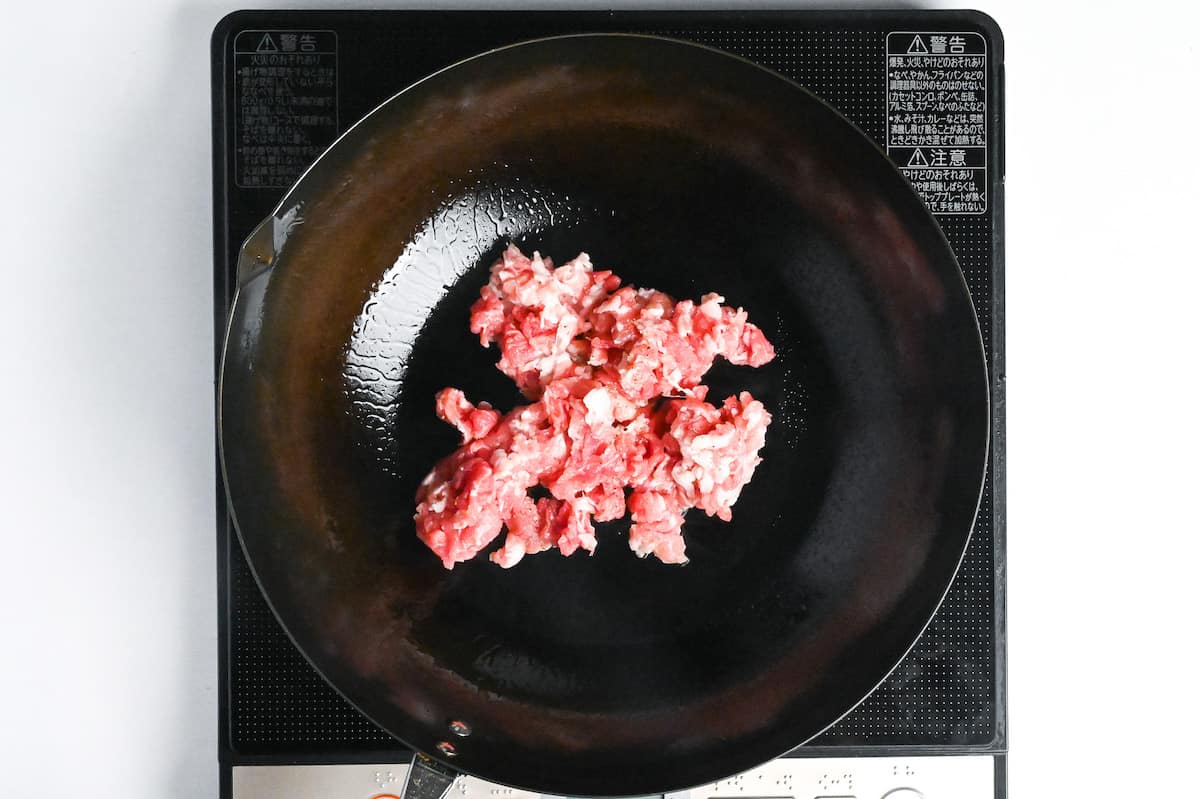
Add the finely chopped fresh ginger and green onion, and stir fry until the ginger becomes fragrant.
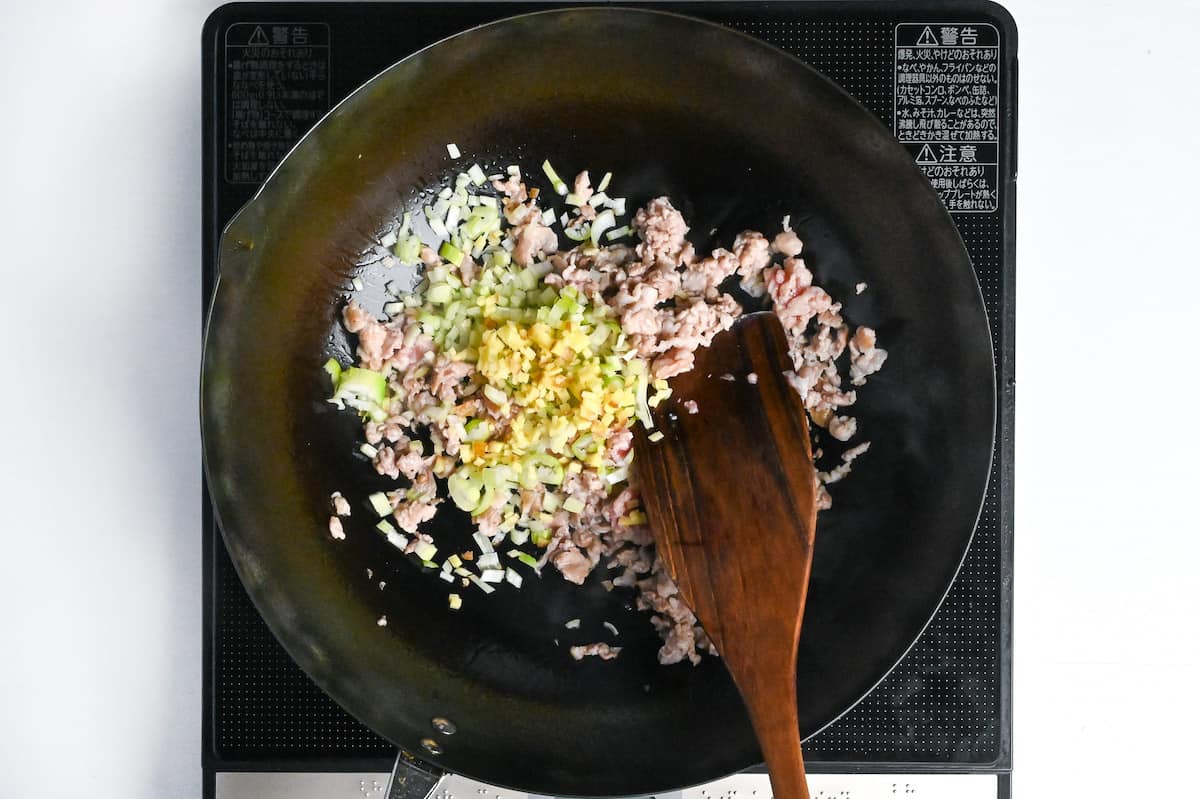
Once fragrant, add the rest of the vegetables. These should be cut into thin strips (julienne) to make it easier to roll the harumaki later.
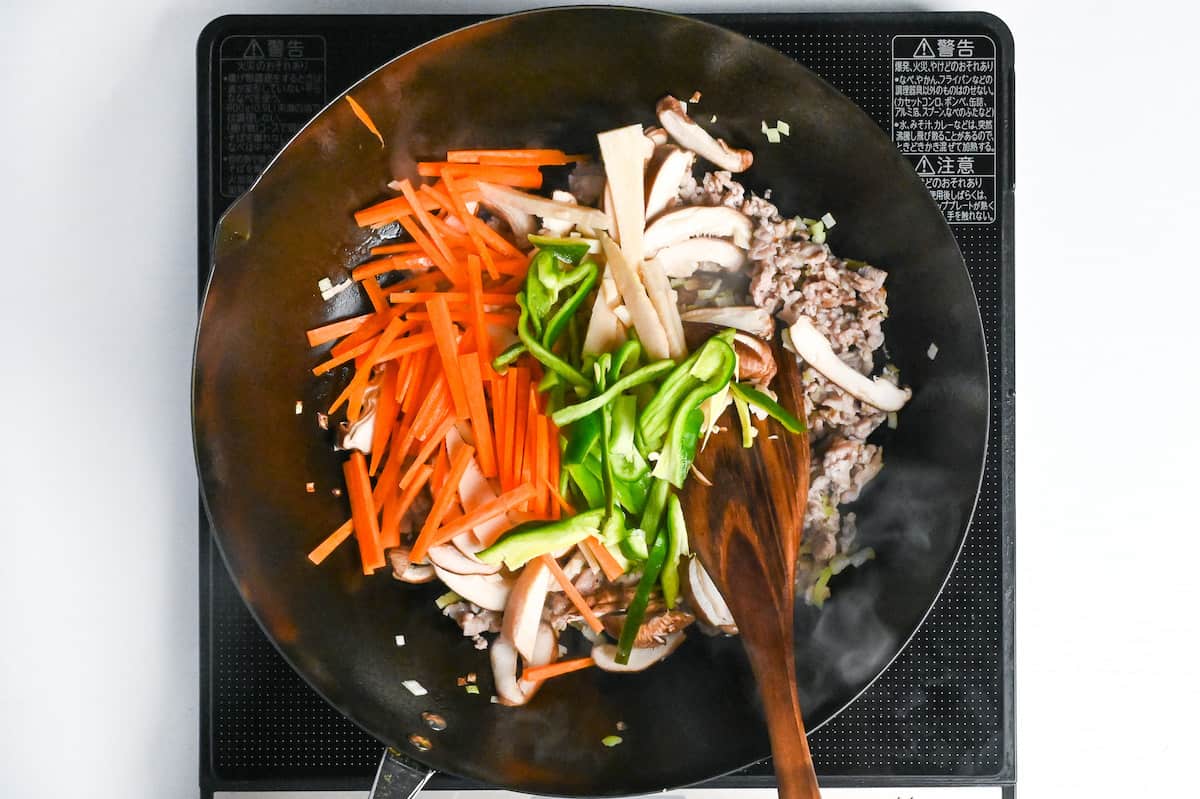
Stir fry for a few minutes.
Add soy sauce, oyster sauce, and sugar to flavor the filling. Mix thoroughly to ensure they’re evenly distributed.
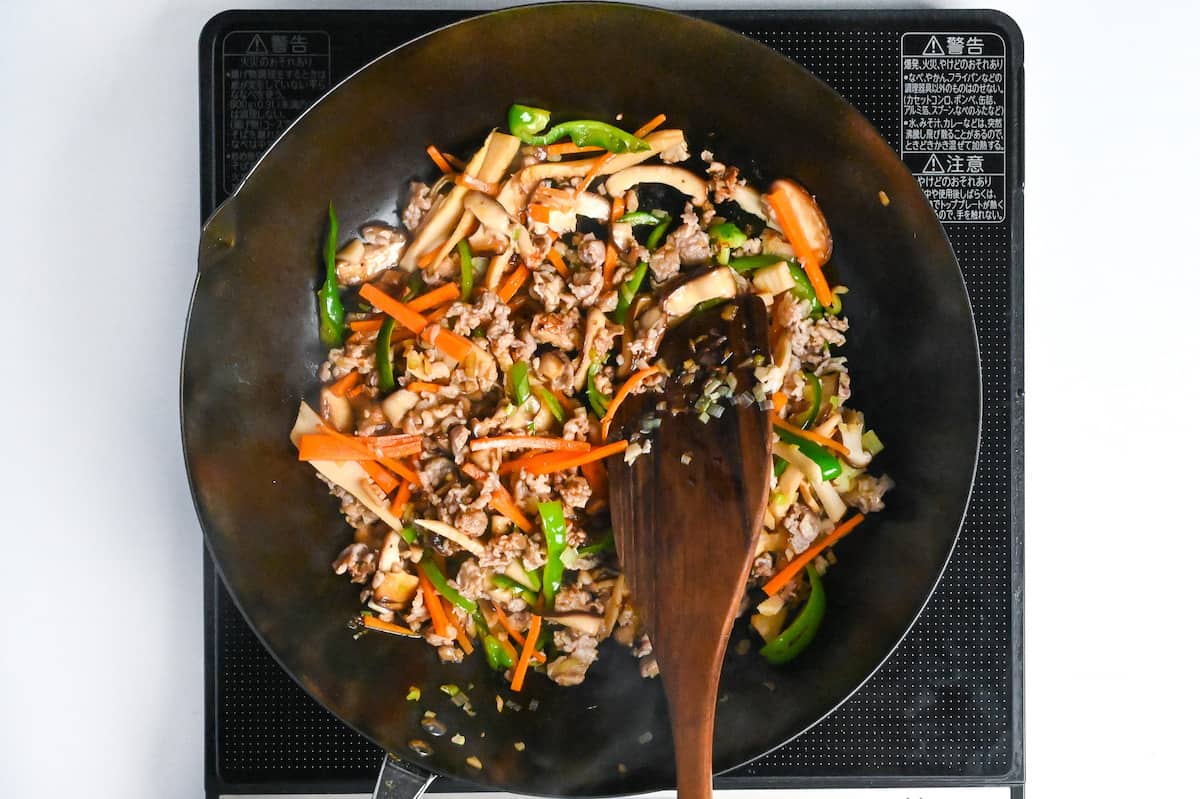
Pour the contents of the other pan (cabbage and chicken stock) into the wok and mix well.
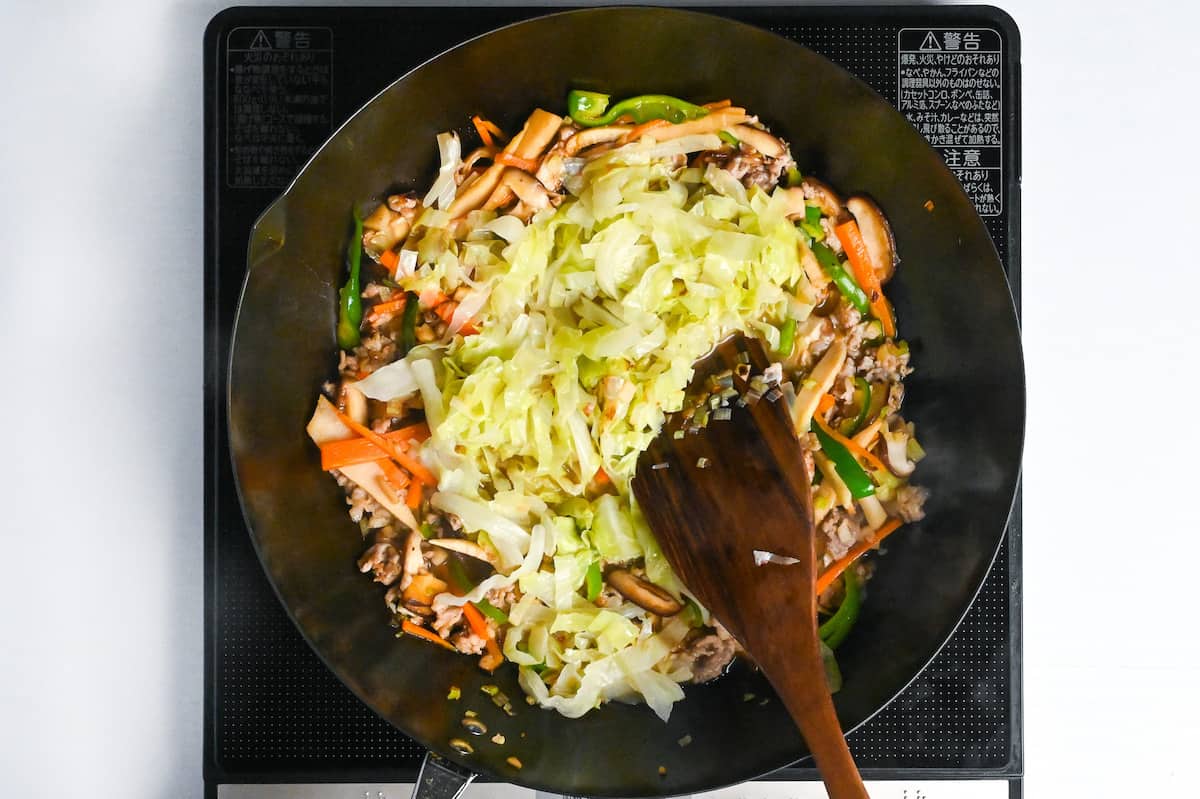
Add the rice vermicelli, make sure they’re submerged in the chicken stock so that they can soften.
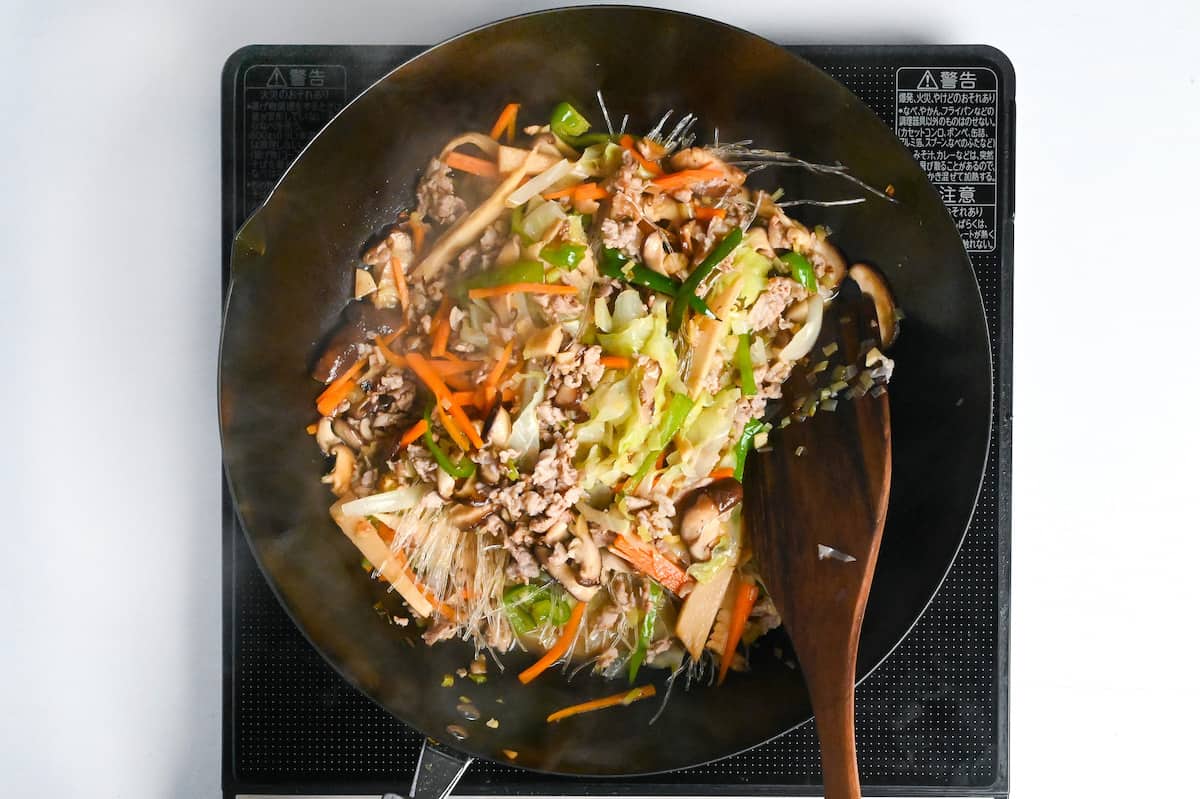
Once the noodles have softened, take a small bowl and mix cold water with cornstarch to make a slurry. Pour the slurry into the pan and mix well.
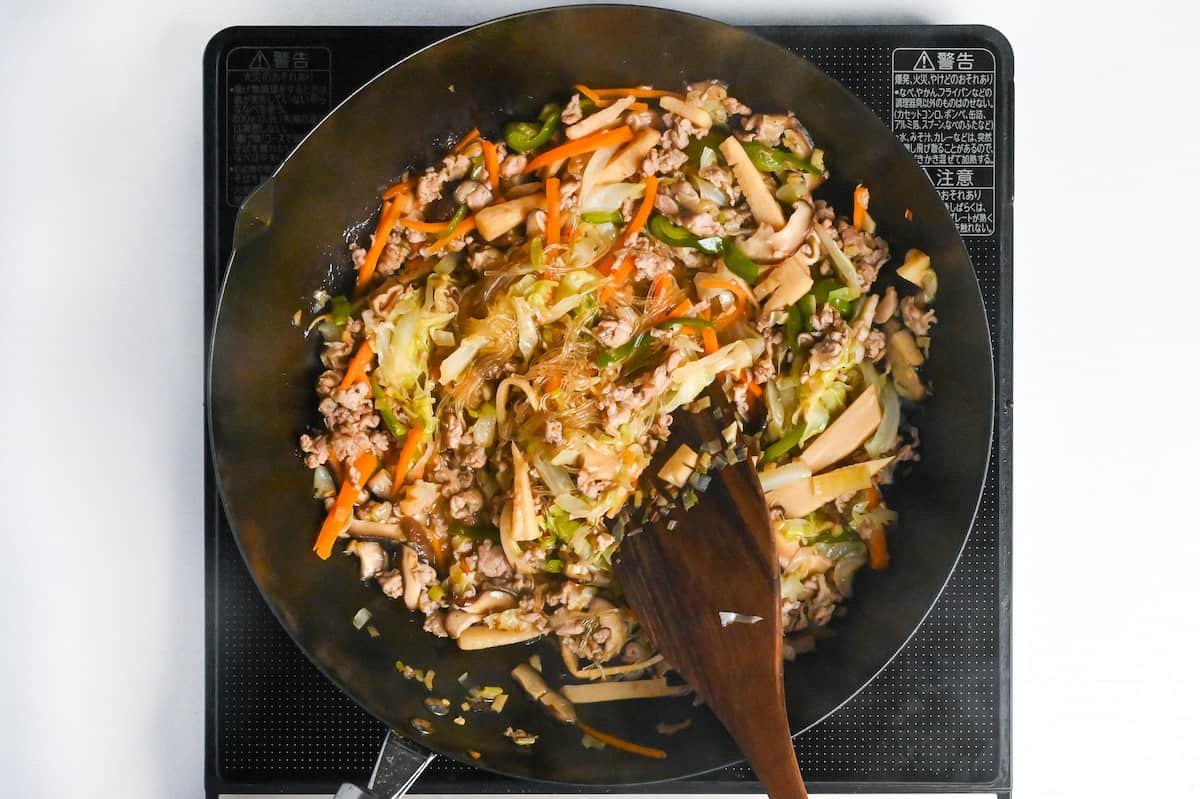
Simmer until thick and glossy, then remove the pan from the heat.
Transfer the filling to a wide container and allow it to cool until cool enough to touch.
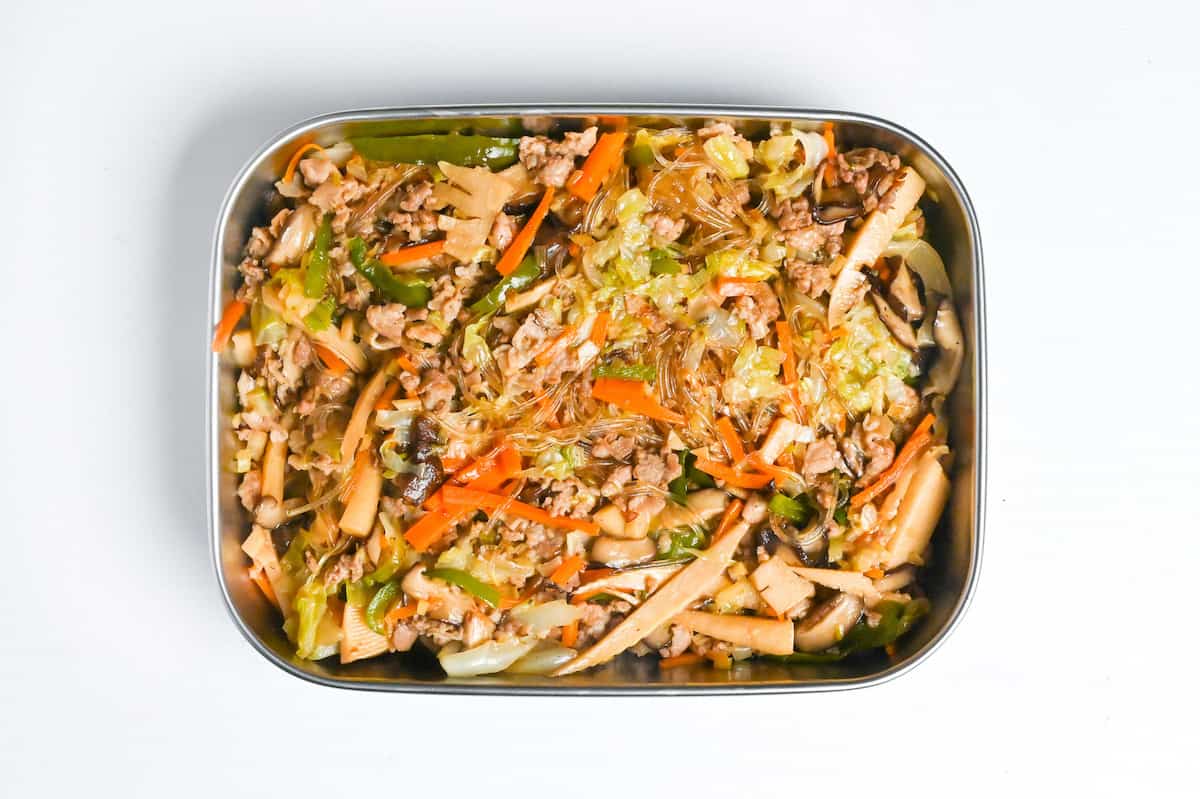
Once cool, use scissors to cut the noodles (this will make it easier to divide the filling).

Divide the filling into portions equal to the number of wrappers you have. This will ensure the size is uniform and you don’t have any leftover filling!
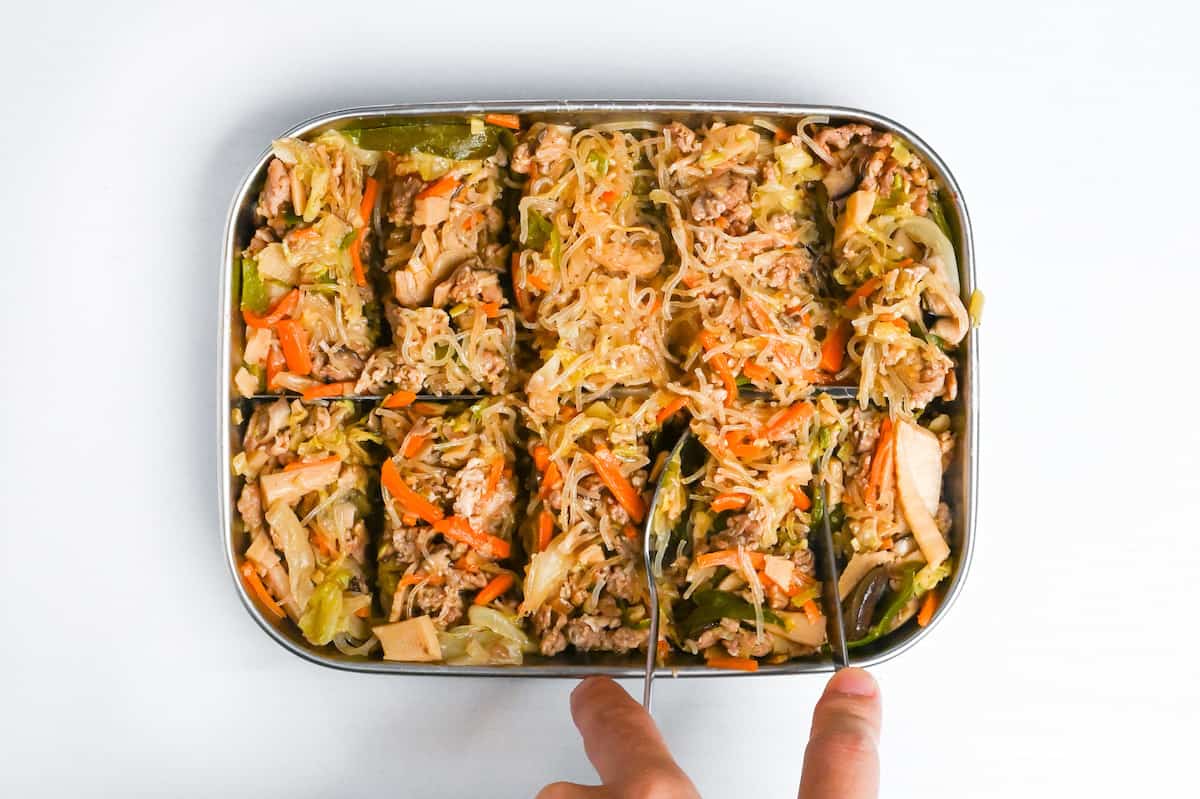
You are now ready to roll your harumaki!
2. How to roll spring rolls
Take a small bowl and add water and flour at a ratio of 2:1 to make a paste. Place your spring roll wrapper in front of you at a 45-degree angle to look like a diamond.
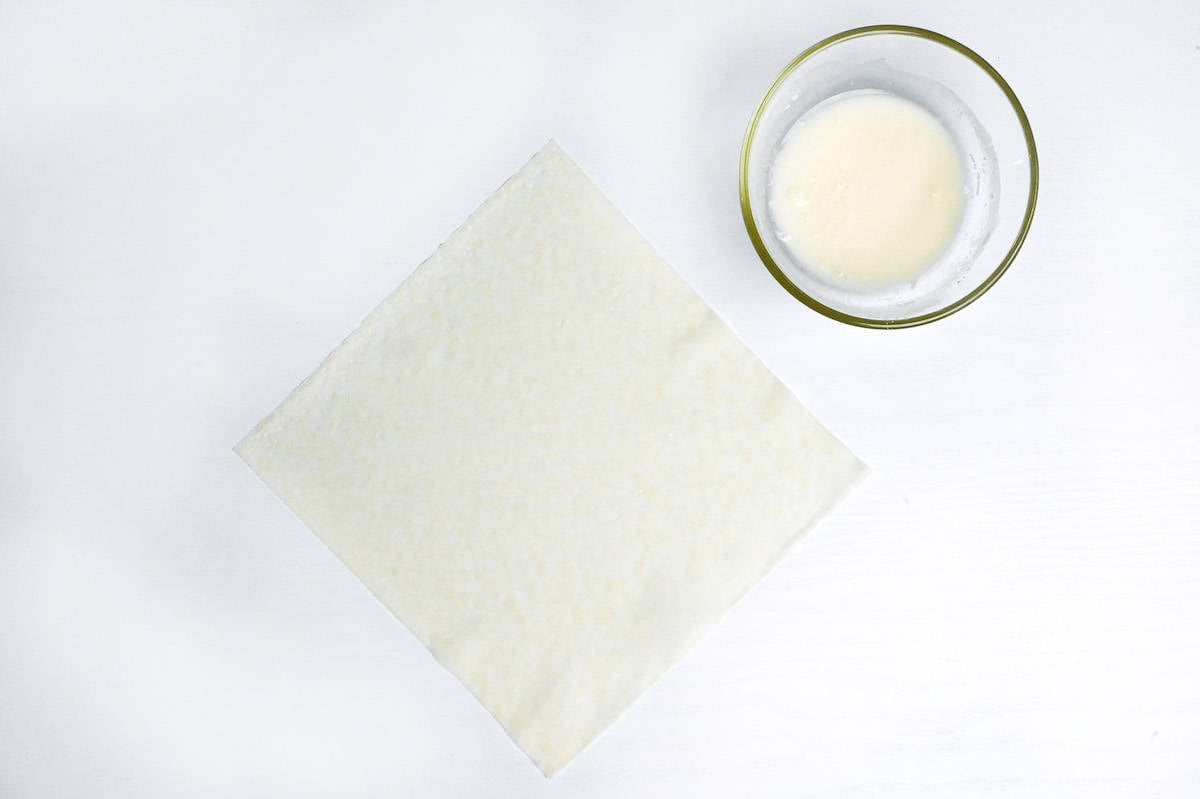
Most harumaki wrappers have a smooth side that should be on the outside of the roll and a rough side that should be inside. When placing your wrapper down, ensure the rough side faces up.

If you can’t tell by eye, use touch to determine which side is which.
Spread the filling horizontally just below the center, making sure not to spread it too close to the edges.
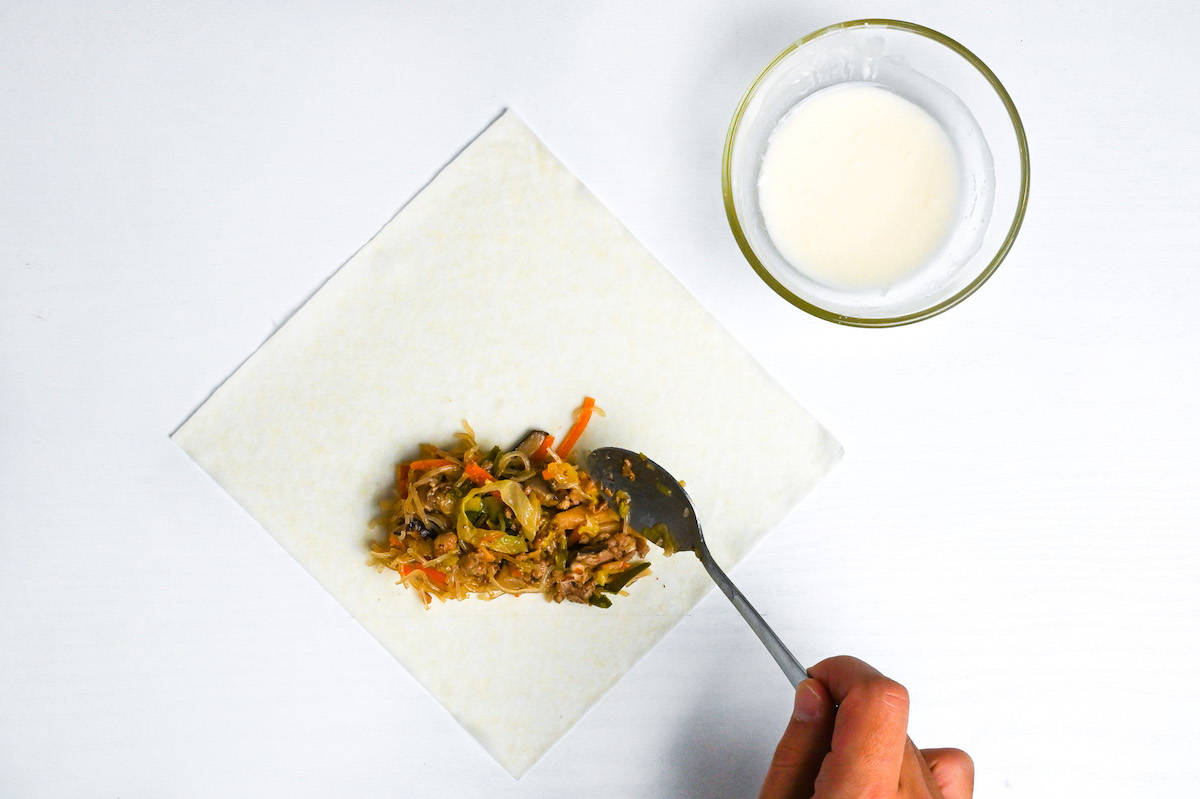
Pull the bottom corner tightly over the filling to start the roll.
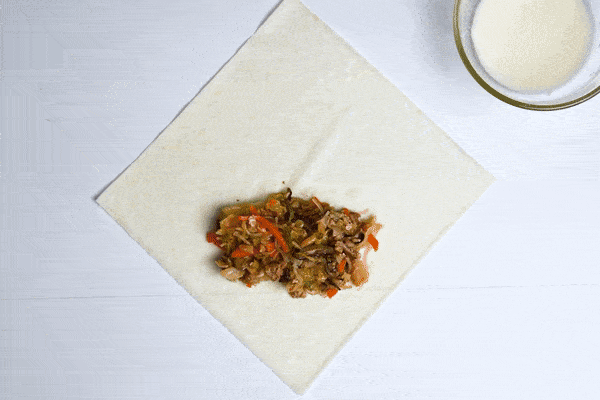
Fold the left and right edges over to make the harumaki resemble an envelope. Press the folds down to secure them. There shouldn’t be any gaps.
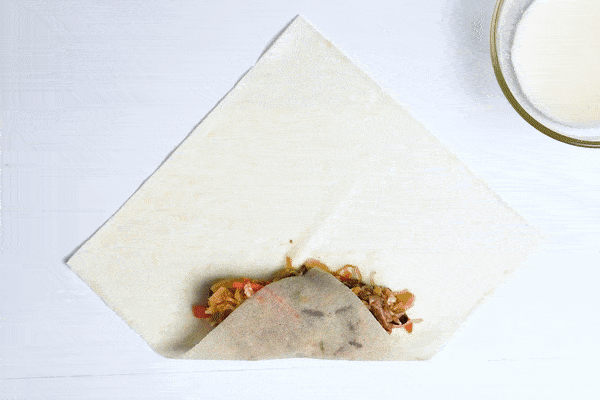
Continue to roll the harumaki upwards 1-2 times (depending on the size of your wrapper) and leave the flap at the top.
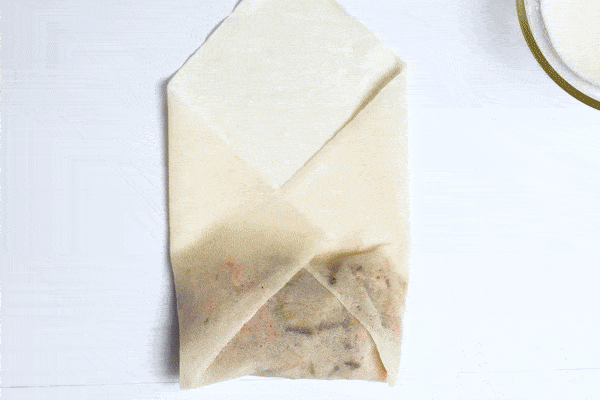
Spread the paste you made earlier along the edges of the flap and then roll once more to complete. Press the harumaki down to secure it.
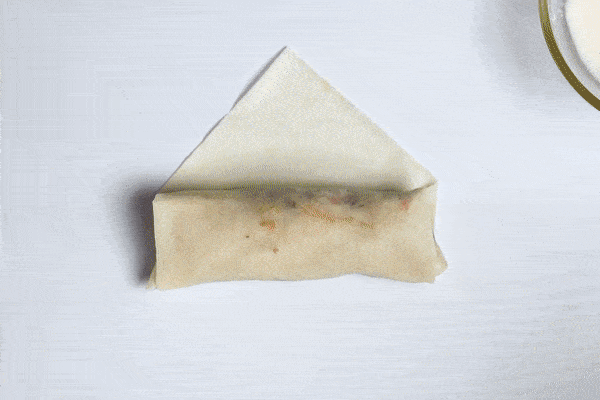
Pressing the harumaki will also make it flatter so that it won’t roll in the oil. This will help it cook more evenly!
Repeat until all of your wrappers and filling are used up.
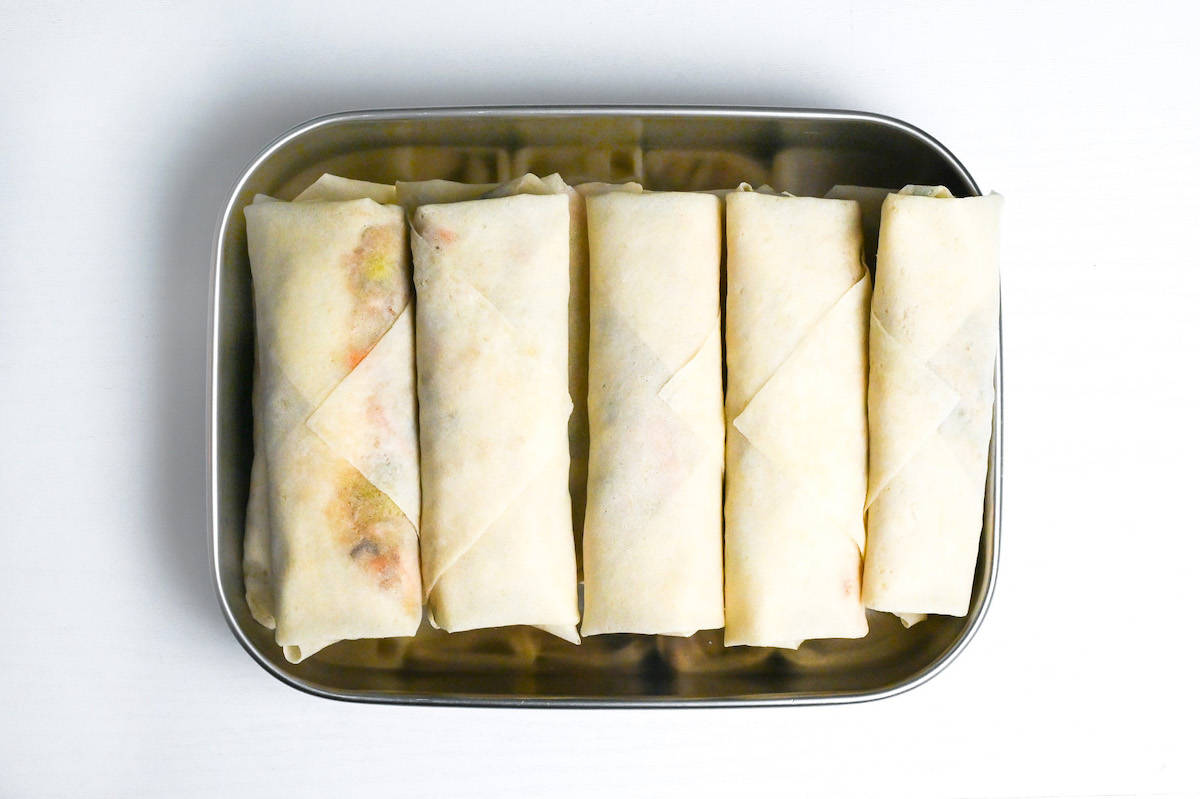
You are now ready to cook them!
3. Frying
Add about 2cm of oil to a pan and heat to 160°C (320°F). Once hot, place the harumaki in the oil with the sealed side (point) facing down. Fry until golden.
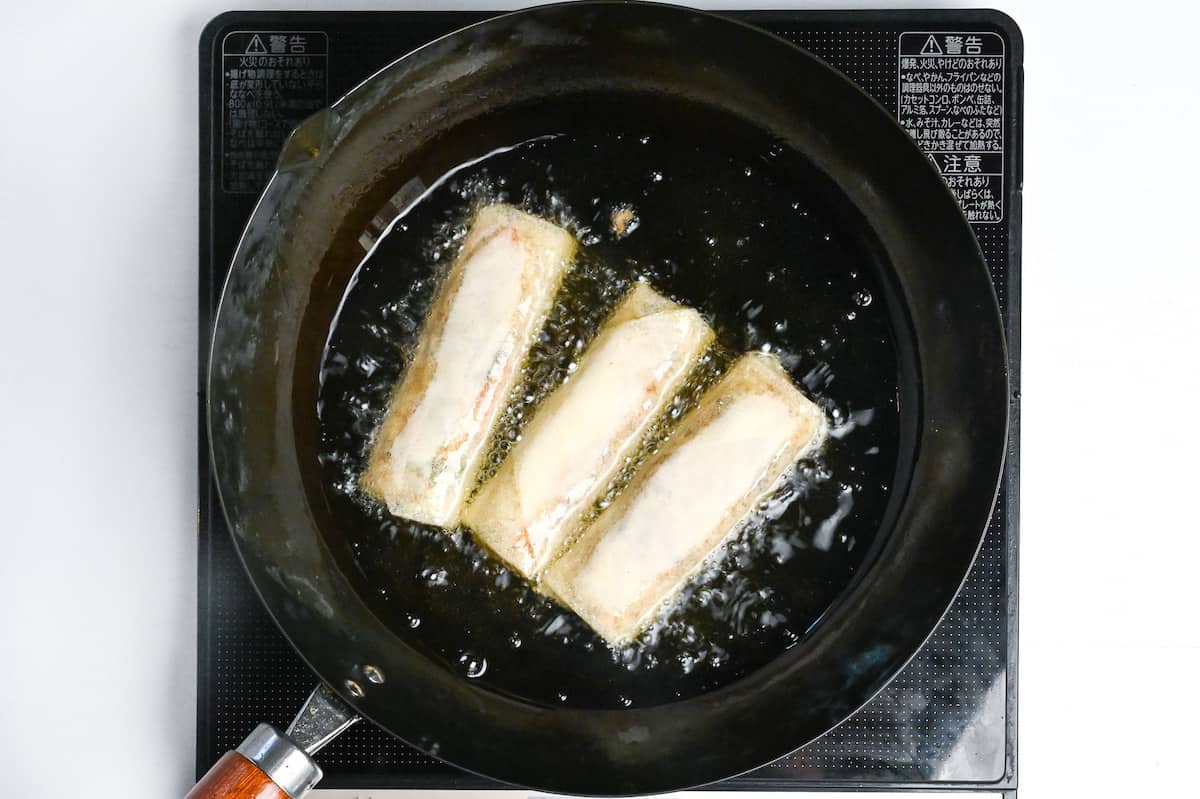
Once golden underneath, flip and repeat on the other side. They don’t need to be cooked for too long since the filling is already cooked.
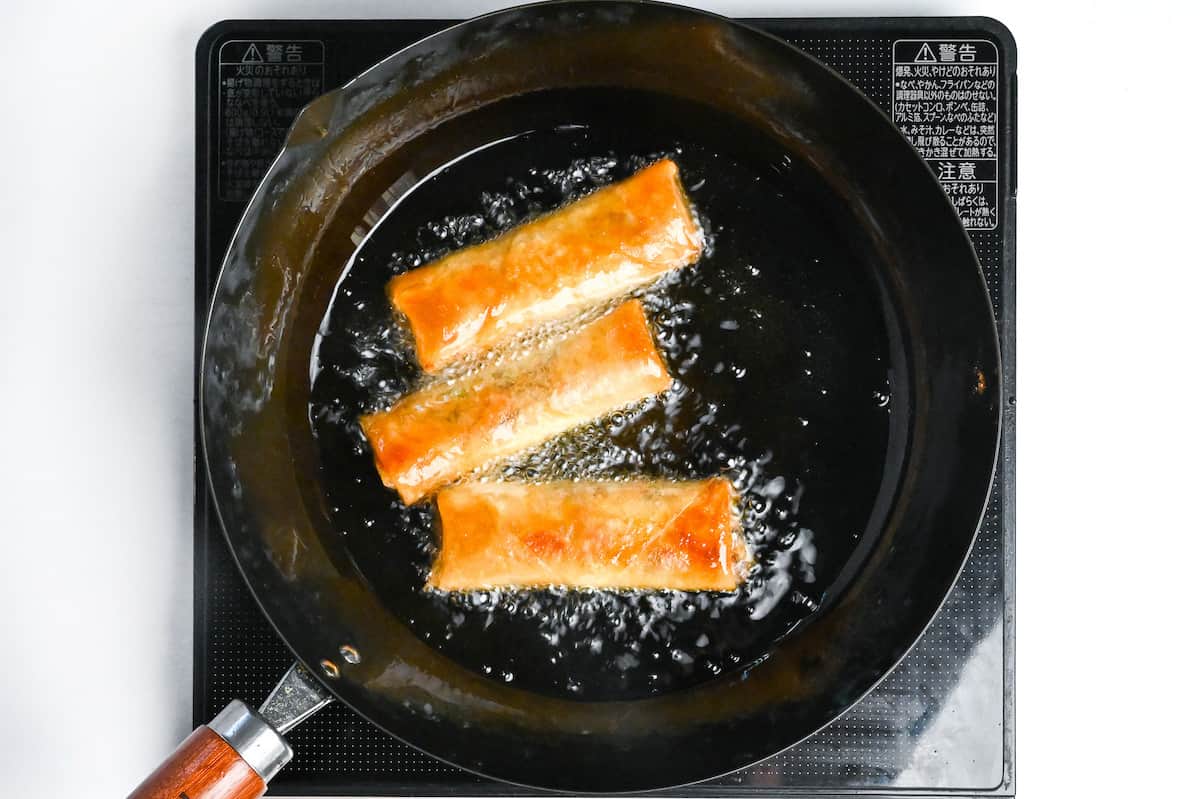
Once golden and crispy all over, rest on a wire rack for a few minutes to drain the excess oil.
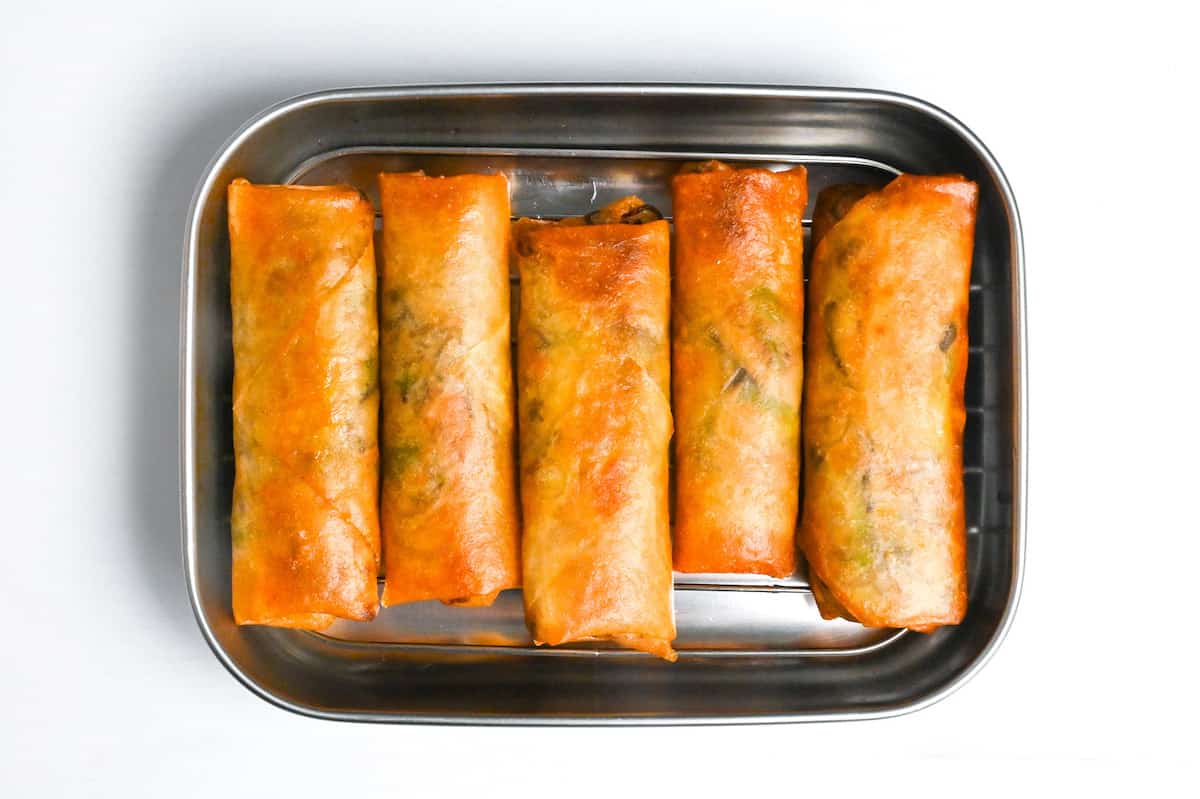
To enjoy these harumaki the Japanese way, serve with soy sauce and a blob of karashi mustard.
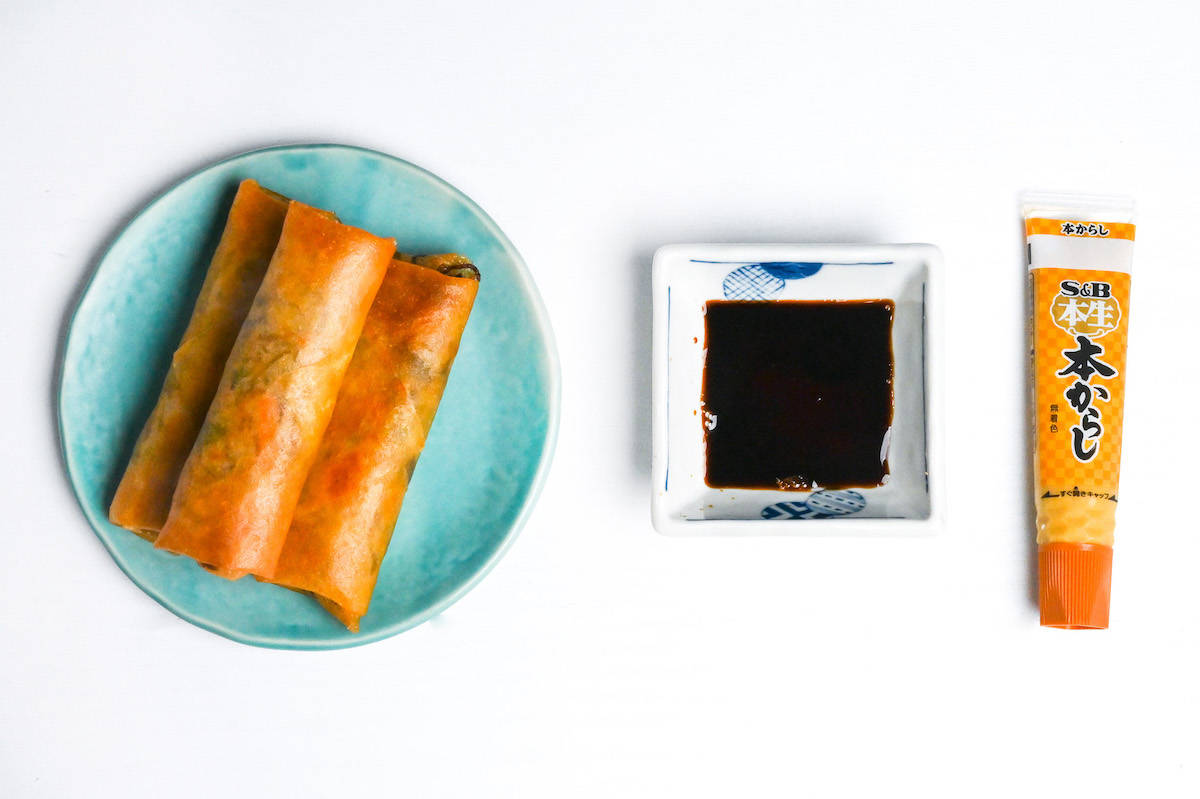
Enjoy!
Jump to Full Recipe MeasurementsTips & Tricks
- Uniform ingredients – Cut the ingredients for the filling thin or small to make it easier to distribute them evenly.
- Thicken thoroughly – Cook the filling well to reduce excess moisture. I add a slurry to thicken the mixture so the moisture doesn’t get absorbed into the wrapper.
- Cool filling thoroughly – Make sure the filling is thoroughly cooled before wrapping; hot filling will make the wrappers warm, soggy and likely to break.
- Divide the portions before rolling – not only will this ensure you don’t have too much or too little filling for your wrappers, but it also makes them more uniform.
- Wrap them tightly – Loose wrapping can leave air in your harumaki, leading to explosions. Press down on the skin while wrapping to release any trapped air and ensure no gaps on the edges.
- Seal with paste – This will stop the wrappers from unraveling. I make a paste with water and flour, a ratio of 2:1.
- Press them flat – Once sealed, press the harumaki flat to prevent it from rolling in the oil. This will help them cook more evenly.
- Fry at 160°C / 320°F – This is high enough for a perfect crispy shell but not too high that it burns easily.
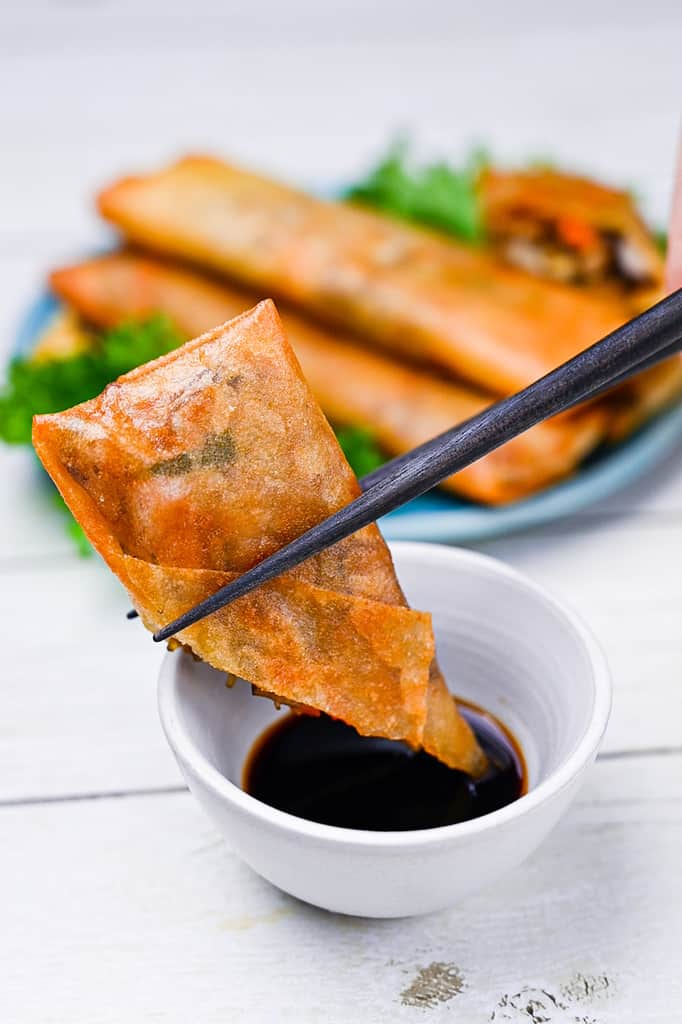
Troubleshooting and FAQ
Making harumaki at home can sometimes present challenges. Here are some common issues and their solutions to prevent:
This issue is perhaps the most bothersome, often resulting in a significant mess near the stove. The causes might be due to trapped air during the rolling process or the ingredients not being sufficiently cooled before being rolled. When fried, the filling heats up quickly, leading the ingredients to expand and burst.
This issue can also arise if the ingredients aren’t cooled sufficiently or if the filling is too watery. When the inner contents spill out, it’s not just unsightly; it also leads to oil splatters. This can result in extensive cleaning and the risk of oil burns. Truly a nightmare! Prevent this by cooking the filling sufficiently to remove excess moisture and cooling thoroughly before rolling.
If harumaki burns, it’s likely due to excessively high oil temperatures or prolonged frying. For optimal spring roll frying, it’s best to begin at a low temperature and remove them once they achieve a golden brown hue. The filling inside is cooked in advance to help avoid this problem.
After some time, harumaki loses its crispiness and becomes oily. This can be attributed to the oil’s temperature or the preparation of the filling. Starting the frying process at a high temperature means the moisture in the wrappers isn’t fully released, leading to sticky rolls post-frying. Furthermore, if the filling isn’t thickened adequately during preparation, it releases water, contributing to the sogginess of the spring rolls.
A common issue when making harumaki is the formation of air bubbles on the surface. This typically stems from the oil being too hot. When spring rolls are cooked at high temperatures, the water in the wrapper expands rapidly. This causes the wrapper to swell and, when fried in the hot oil, hardens with bubbles on its surface. However, this primarily affects the appearance, so it’s not a significant concern.
How to Store
For those looking to make and store a large batch of harumaki, freezing before frying is the best choice. Avoid freezing them post-frying, as the wrapper turns soggy upon defrosting, a problem that also arises with refrigeration.
By freezing them pre-frying, you can ensure a crispy harumaki when you’re ready to enjoy them or pack them for lunch. Uncooked homemade harumaki can be frozen for up to 1 month.
The filling can be stored alone in the refrigerator for up to 2 days and wrapped right before frying. Avoid prolonged refrigeration of assembled harumaki, as this can cause the wrapper to absorb the moisture in the filling and become soggy.
If you’ve already fried and then frozen or refrigerated your harumaki, re-frying is essential to regain (still won’t be the same) that desired crispiness. Always aim to fry only what you’ll consume immediately.
Storage summary
Room temperature – Not recommended.
Refrigerated – About 2 days (filling only).
Frozen – Wrapped harumaki before frying, up to 1 month (the best option).
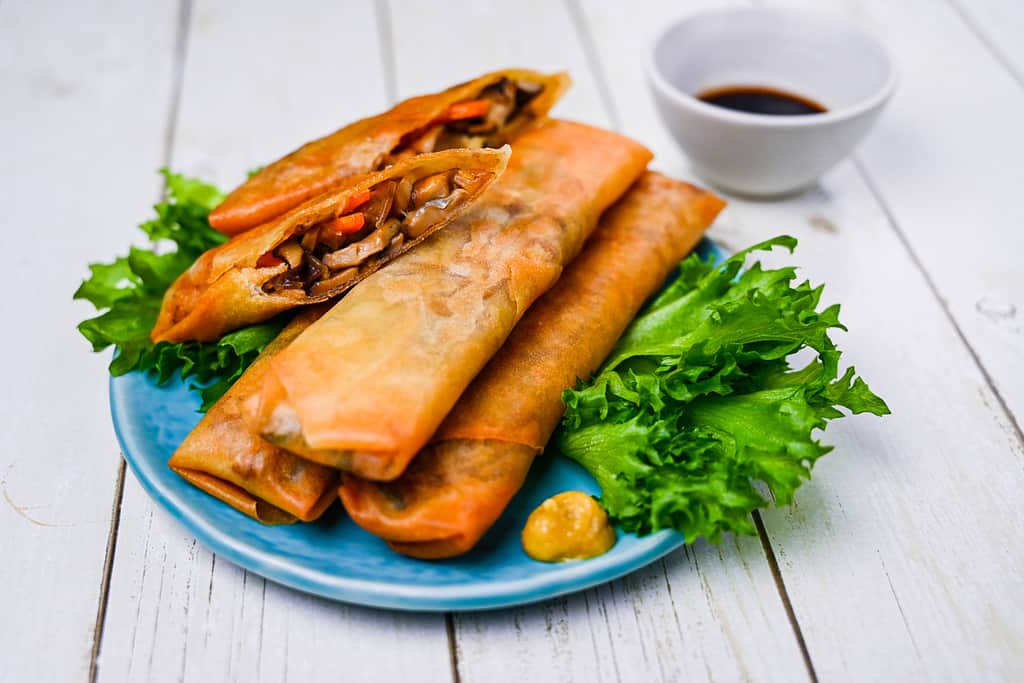
I hope you enjoy this Japanese-style Spring Roll recipe! If you try it out, I’d really appreciate it if you could spare a moment to let me know what you thought by giving a review and star rating in the comments below. It’s also helpful to share any adjustments you made to the recipe with our other readers. Thank you!
More Chinese-inspired Japanese Recipes
- Crispy Pan-Fried Pork Gyoza
- Shumai (Steamed Pork Dumplings)
- Nikuman (Steamed Pork Buns)
- Subuta (Japanese-style Sweet and Sour Pork)
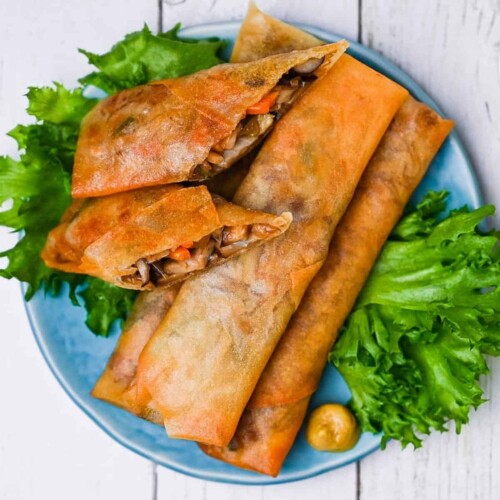
Harumaki (Japanese Spring Roll)
Ingredients
- 150 g green cabbage roughly cut
- 30 g Japanese leek (naganegi) finely chopped
- 60 g fresh shiitake mushroom thinly sliced
- 30 g carrot julienned
- 30 g bell pepper julienned
- 50 g canned bamboo shoots julienned
- 10 g ginger root finely diced
- 150 g pork belly or shoulder, alternatively pork mince
- 1 pinch salt and pepper
- 1 tsp toasted sesame oil
- 2 tbsp sake
- 300 ml chicken bouillon
- ½ tbsp Japanese soy sauce (koikuchi shoyu)
- ½ tbsp oyster sauce
- ½ tbsp sugar
- 30 g thin glass noodles (harusame) dry
- 1 tbsp cold water for slurry
- 1 tsp cornstarch for slurry
- 10 sheets square spring roll wrappers
- 2 tbsp cold water for paste
- 1 tbsp all-purpose flour for paste
- cooking oil for shallow frying
My recommended brands of ingredients and seasonings can be found in my Japanese pantry guide.
Can’t find certain Japanese ingredients? See my substitution guide here.
Instructions
Make the filling
- First, Cut all the vegetables (150 g green cabbage, 30 g Japanese leek (naganegi), 60 g fresh shiitake mushroom, 30 g carrot, 30 g bell pepper, 50 g canned bamboo shoots, 10 g ginger root) according to the ingredients list and cut 150 g pork belly into small pieces.

- In a bowl, mix the pork with 1 pinch salt and pepper and 1 tsp toasted sesame oil. Mix.

- Heat up a pan (that has a lid) on medium and fry the cabbage until softened slightly.

- Once softened, add 2 tbsp sake and 300 ml chicken bouillon. Steam with the lid on for 3 minutes and then remove from the heat.

- In a separate, larger pan, fry the pork on a medium-low heat until the meat is sealed.

- Add the ginger and green onion, and fry until fragrant.

- Add the rest of the vegetables to the pan with the pork and stir fry together for a few minutes.

- Season the filling with ½ tbsp Japanese soy sauce (koikuchi shoyu), ½ tbsp oyster sauce and ½ tbsp sugar and mix well.

- Pour the contents of the other pan (cabbage and chicken stock) into the pan with the pork and vegetables.

- Submerge 30 g thin glass noodles (harusame) into the chicken stock and simmer until softened.

- Make a slurry by mixing 1 tbsp cold water and 1 tsp cornstarch in a small bowl. Pour it into the pan and simmer until thick and glossy.

- Remove from the heat and transfer to a container to cool.

- When it's cool enough to touch, cut the glass noodles with scissors so that they are 5-10cm in length. (This is only necessary if your glass noodles are long.) Chill in the refrigerator until you're ready to assemble.

How to roll
- Divide the filling into portions equal to the number of wrappers.

- Take a small bowl and add water and flour at a ratio of 2:1. (2 tbsp water to 1 tbsp flour) and position the wrapper in front of you at a 45-degree angle so it looks like a diamond.

- Spread the filling horizontally just below the center, making sure not to spread it too close to the edge.

- Tightly wrap the bottom point over the filling.

- Fold the left and right edges over and press them down to secure.

- Roll it up, leaving a point at the top.

- Wet the top edges of the point with the water/flour mixture and finish the roll. Press down to secure.

- Repeat until all the wrappers and filling are used up.

Fry
- Take a pan and add 2cm (1 inch) of cooking oil. Heat to 160 °C (320 °F) and add the spring rolls with the sealed side (point) facing down.

- Cook for a few minutes until golden and then flip and repeat on the other side. (The filling is already cooked, so the main purpose is to make it golden and crispy.)

- Rest on a wire wrack for a few minutes to drain the excess oil.

- Serve with soy sauce and Japanese mustard, and enjoy!

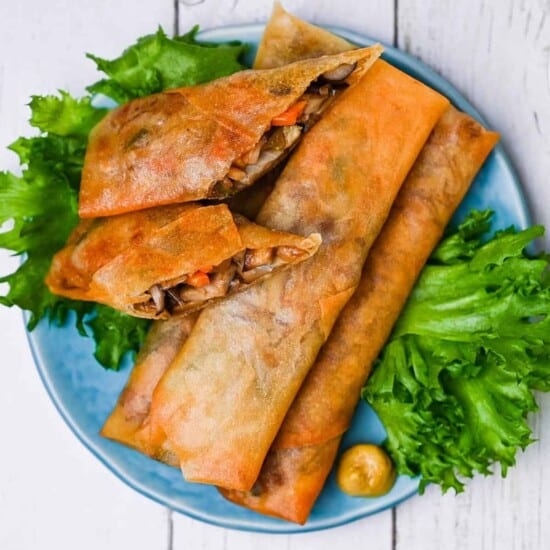




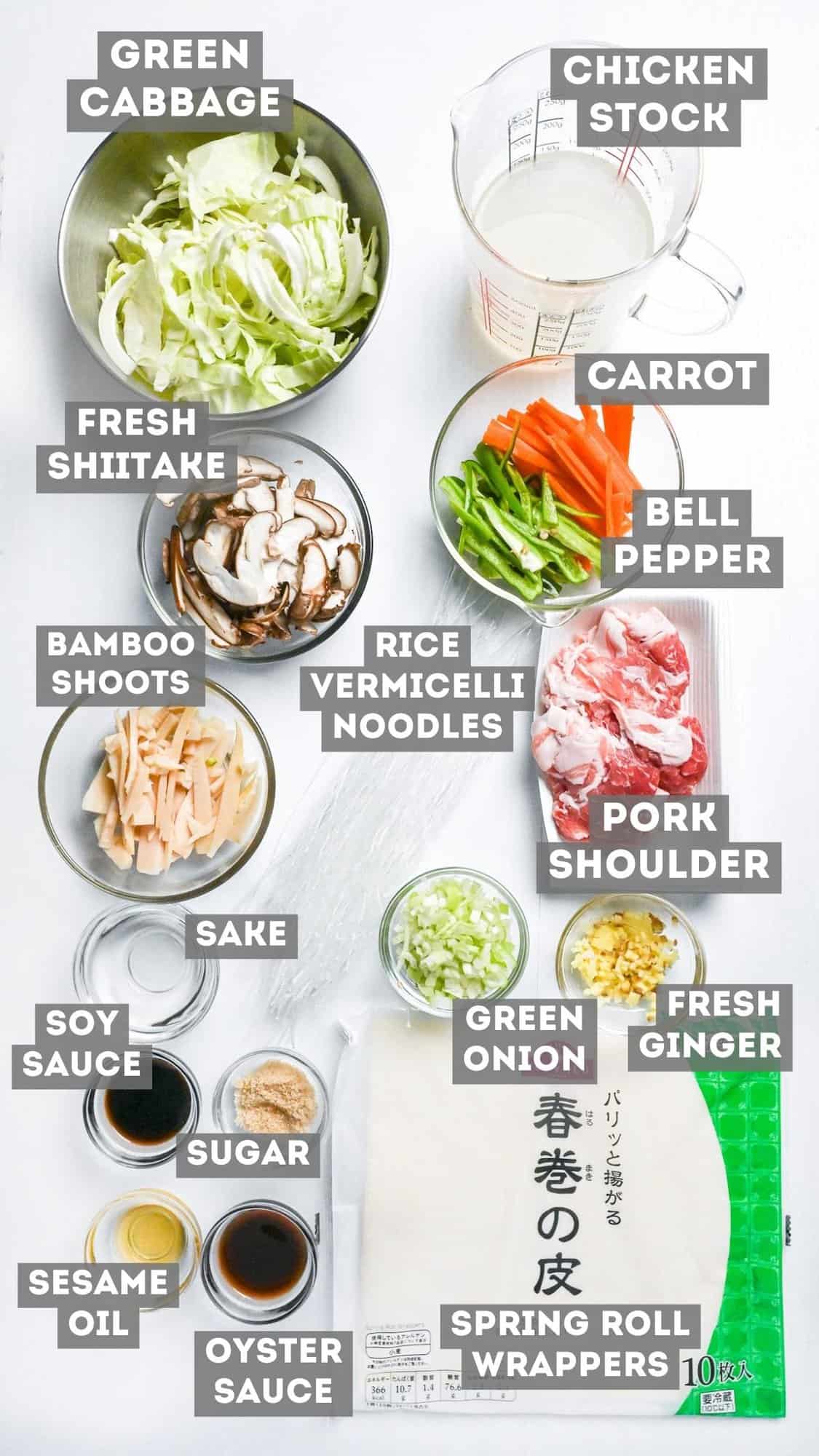
Hi!
Can I cook Harumaki in the air fryer? If not, can I bake I bake the rolls? Give me tips, please.
Thank you, so much,
Manuela
Hi Manuela,
Thank you for your comment! Harumaki would definitely be one of the best things you can make in an air fryer. Unfortunately, I don’t own an air fryer at this time, so I cannot give you specific instructions, but I think the best option is to follow popular air fryer spring roll recipes (preferably with similar sized rolls to my recipe) for cooking instructions.
Sorry that I can’t be more of a help! I will make air-fryer version once I get an air fryer!
Yuto